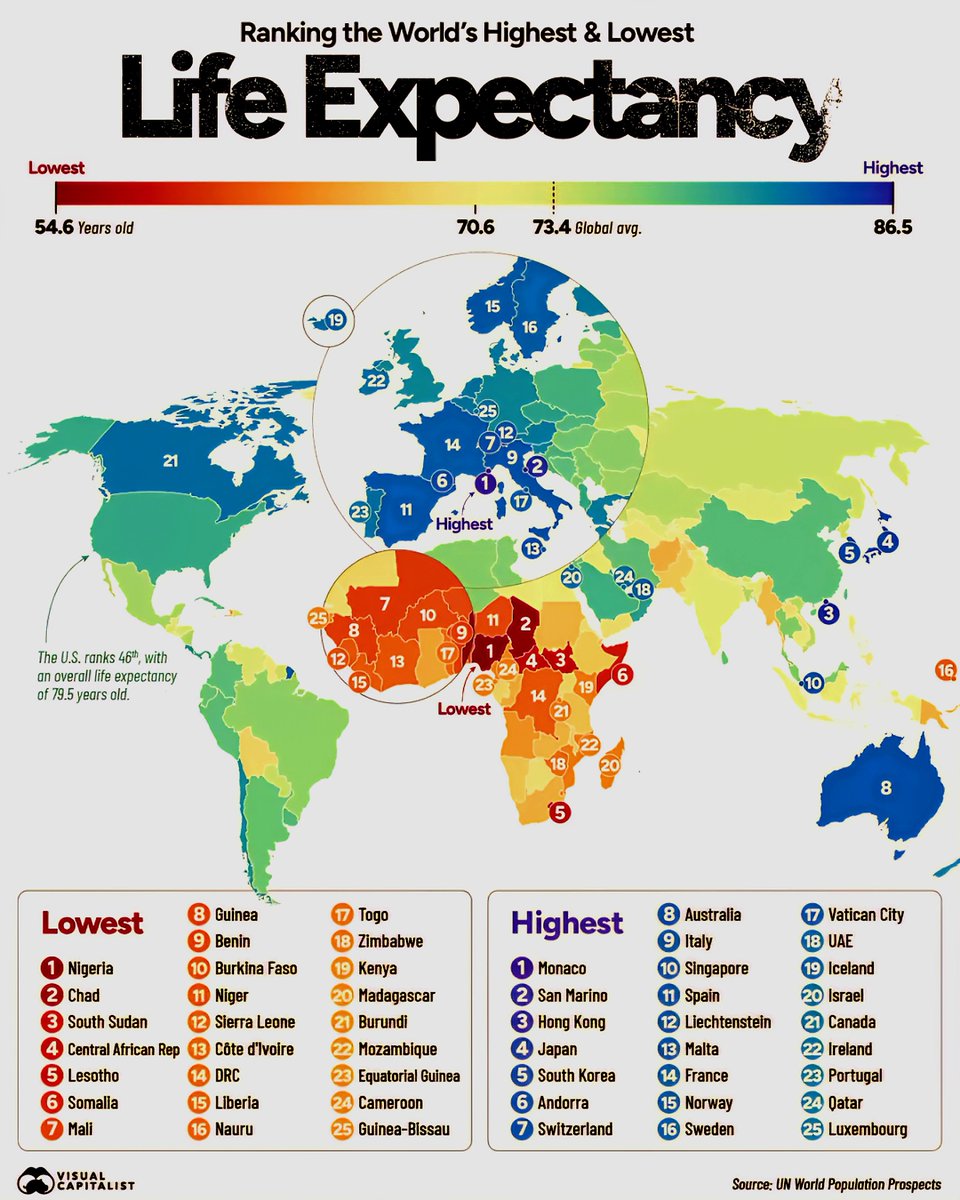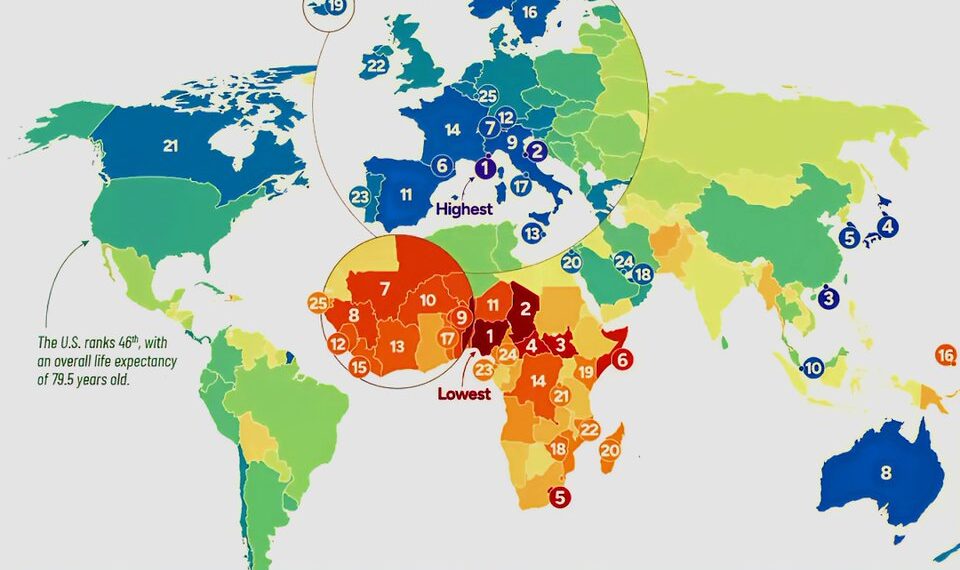Select Language:
Exploring the Extremes in Global Life Expectancy in 2025

1. Japan Continues to Lead in Longevity
Japan remains the country with the highest average life expectancy in 2025, with residents living up to an average age of 84.7 years. This remarkable longevity is attributed to a combination of factors, including a nutritious diet, robust healthcare systems, and active lifestyles. Japanese society places a significant emphasis on community engagement and preventative healthcare, which contribute to the nation’s impressive health outcomes. The nation’s focus on aging gracefully is also reflected in its infrastructure tailored for seniors and widespread cultural practices promoting wellness.
2. Hong Kong Maintains Its Top Spot and Surpasses Japan
In 2025, Hong Kong has edged ahead of Japan with an average lifespan of approximately 85.2 years, making it the global leader in longevity. This outstanding statistic can be linked to the region’s high-quality healthcare, excellent clean living standards, and dietary habits rich in seafood and vegetables. Hong Kong’s dense healthcare network ensures timely medical intervention, while public health policies continually evolve to address aging populations. The combination of urban density and accessible medical services boosts overall longevity.
3. The Countries with Drastically Shorter Life Expectancies
While some nations celebrate high life spans, others face stark challenges with significantly lower averages. Central African countries, such as Chad, exhibit life expectancies as low as 54 years. Factors contributing to these low figures include ongoing conflicts, limited access to healthcare, high infant mortality rates, and widespread poverty. In these countries, communicable diseases such as malaria, HIV/AIDS, and respiratory infections remain prevalent, and healthcare infrastructure is often underfunded or inaccessible to large portions of the population.
4. The Impact of Socioeconomic Factors on Longevity
Economic stability and social welfare systems significantly influence life expectancy worldwide. Countries with well-funded healthcare systems, social safety nets, and healthier lifestyle standards tend to experience higher longevity rates. Conversely, nations struggling with economic hardship often see their populations endure shorter lifespans. Investment in healthcare, education, and sanitation plays a crucial role in shifting these figures over time.
5. The Role of Healthcare and Public Policy
Country-specific health policies profoundly impact life expectancy. For example, Scandinavian nations like Sweden and Norway continue to excel due to comprehensive healthcare policies that emphasize universal coverage, disease prevention, and health promotion. These policies ensure early detection and management of health conditions, substantially extending life expectancy. Emerging nations investing in healthcare infrastructure are also beginning to see positive shifts in their population’s overall health.
6. The Link Between Lifestyle and Longevity
Lifestyle choices remain a major determinant of how long people live. Countries where physical activity is a cultural norm, smoking rates are low, and diets are balanced tend to enjoy higher average age spans. In contrast, nations with high smoking, alcohol consumption, and sedentary lifestyles often report lower life expectancies. Public health campaigns across the globe aim to promote healthier living to extend lives and improve the quality of aging.
7. The Role of Genetics and Environment
While healthcare and lifestyle influence longevity, genetics also play a critical role. Certain populations naturally possess genetic traits favoring longer lives. However, environment and social conditions often tip the scales. Urban pollution, access to clean water, and exposure to infectious diseases can either detract from or contribute to longevity, underscoring the importance of environmental management.
8. Looking Ahead: Trends and Challenges
As nations strive to improve their health systems, the trend toward increasing life expectancy appears promising. Innovations in medical technology, such as precision medicine and regenerative therapies, are expected to further boost longevity. Nevertheless, the challenge remains in managing aging populations, ensuring sustainable healthcare financing, and addressing disparities in health outcomes. Policymakers focus on creating resilient health systems capable of supporting longer, healthier lives for all citizens.
In summary, 2025 reveals a complex landscape of global longevity, shaped by a multitude of social, medical, and environmental factors. While some nations lead the race for longevity, others grapple with challenges that shorten life spans. Continued efforts toward equitable healthcare and healthy living are crucial to closing these gaps and enhancing quality of life worldwide.






